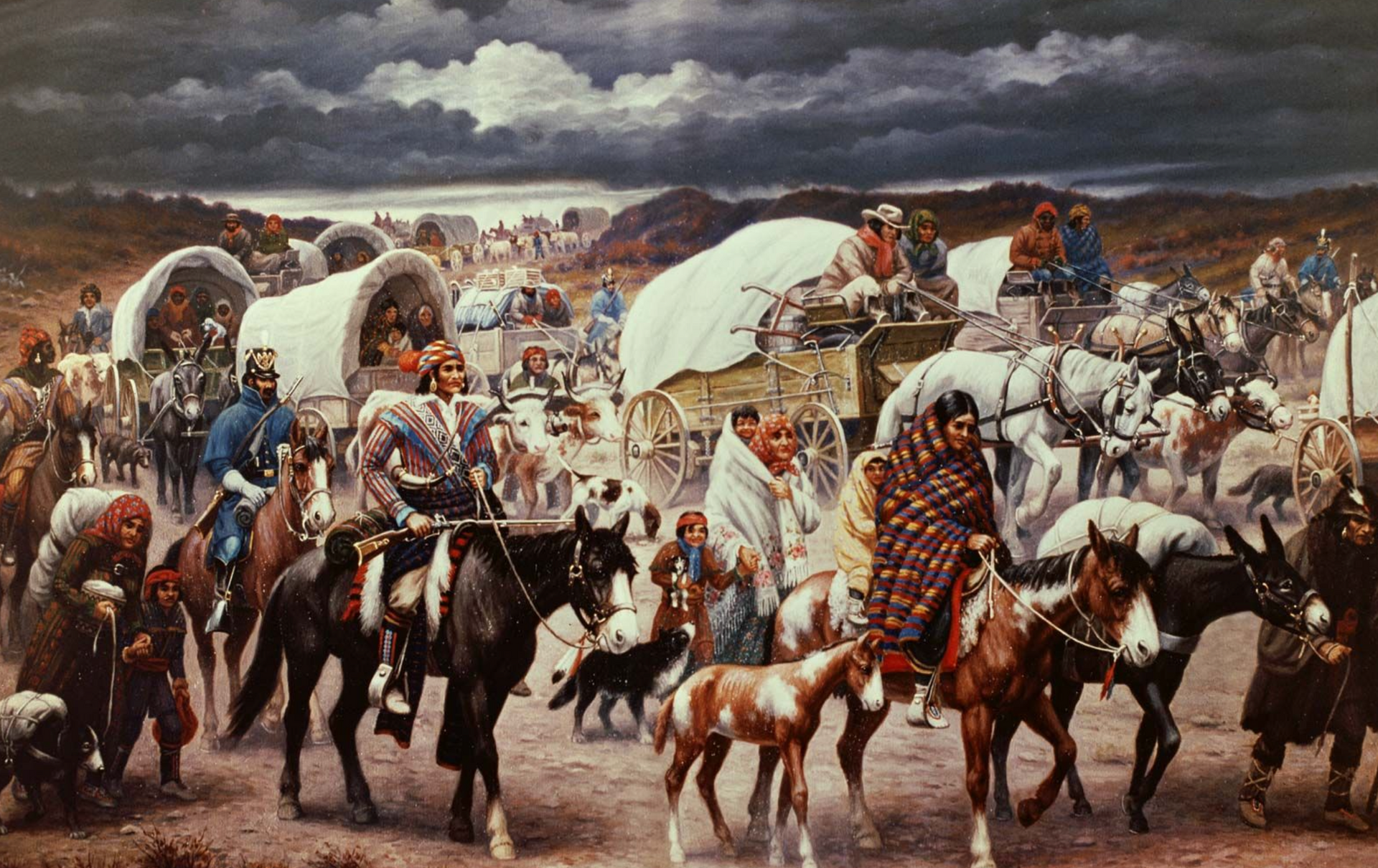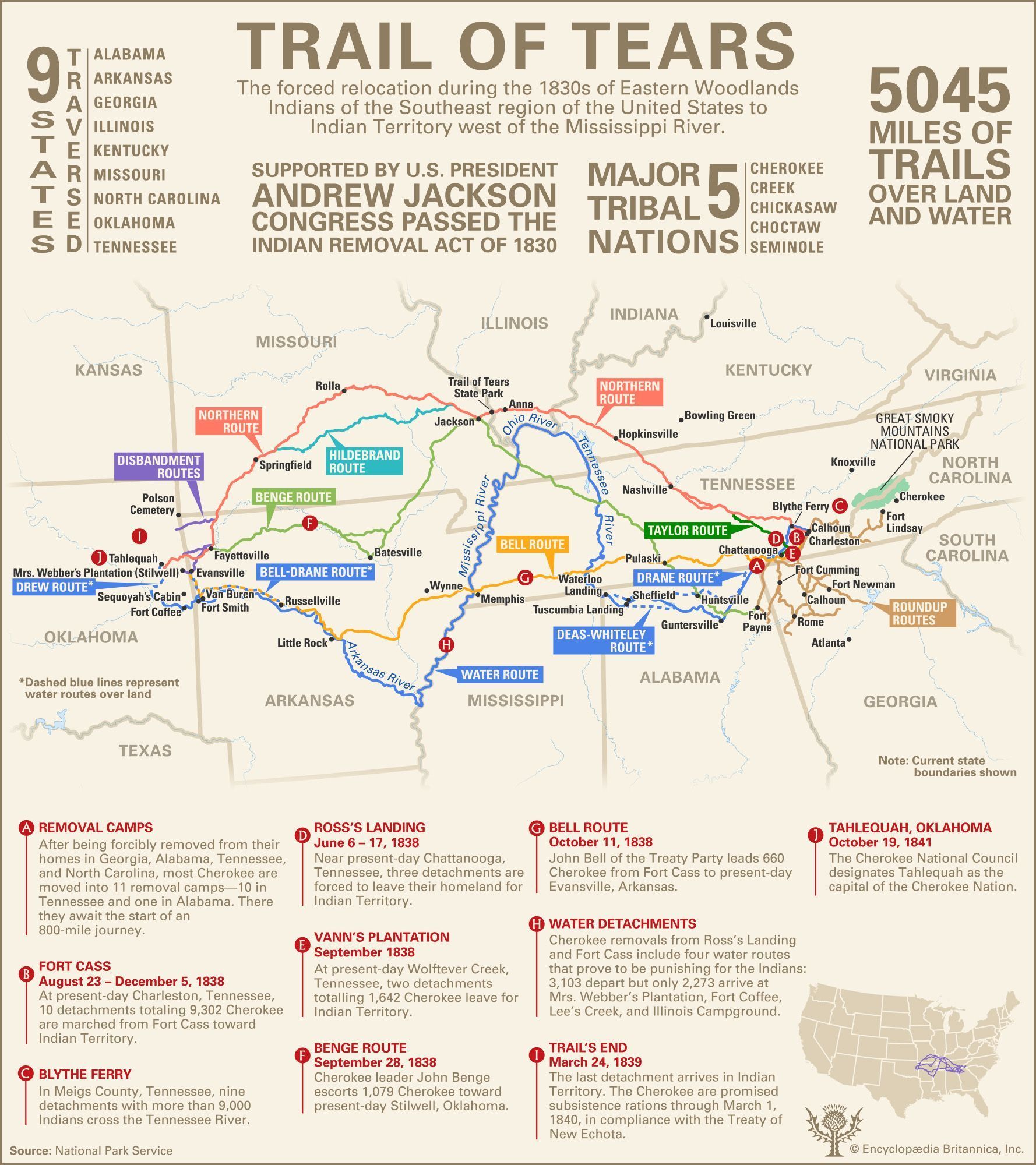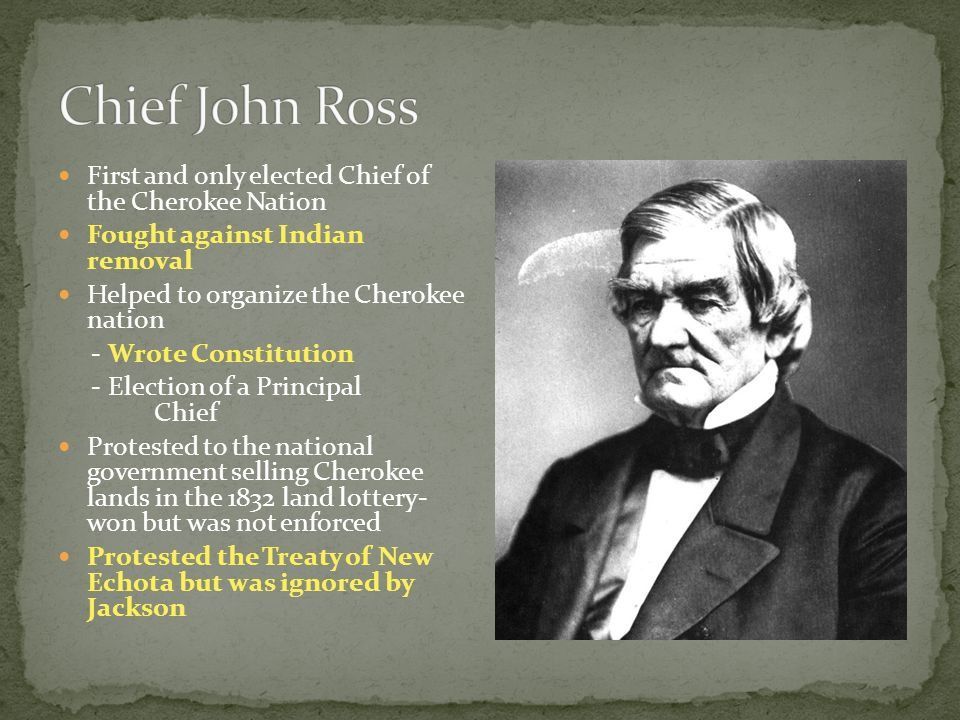WHAT IS THE
TRAIL OF TEARS?


Trail of Tears, in U.S. history, the forced relocation during the 1830s of Eastern Woodlands Indians of the Southeast region of the United States (including Cherokee, Creek, Chickasaw, Choctaw, and Seminole, among other nations) to Indian Territory west of the Mississippi River. Estimates based on tribal and military records suggest that approximately 100,000 indigenous people were forced from their homes during that period, which is sometimes known as the removal era, and that some 15,000 died during the journey west. The term Trail of Tears invokes the collective suffering those people experienced, although it is most commonly used in reference to the removal experiences of the Southeast Indiansgenerally and the Cherokee nation specifically.

The physical trail consisted of several overland routes and one main water route and, by passage of the Omnibus Public Lands Management Act in 2009, stretched some 5,045 miles (about 8,120 km) across portions of nine states (Alabama, Arkansas, Georgia, Illinois, Kentucky, Missouri, North Carolina, Oklahoma, and Tennessee).
The roots of forced relocation lay in greed. The British Proclamation of 1763designated the region between the Appalachian Mountains and the Mississippi River as Indian Territory. Although that region was to be protected for the exclusiveuse of indigenous peoples, large numbers of Euro-American land speculators and settlers soon entered. For the most part, the British and, later, U.S. governments ignored these acts of trespass.
The routes used by Indigenous people as part of the Trail of Tears consisted of several overland routes and one main water route that stretched some 5,045 miles (about 8,120 km) across portions of nine states.
In 1829 a gold rush occurred on Cherokee land in Georgia. Vast amounts of wealth were at stake: at their peak, Georgia mines produced approximately 300 ounces of gold a day. Land speculators soon demanded that the U.S. Congress devolve to the states the control of all real property owned by tribes and their members. That position was supported by Pres. Andrew Jackson, who was himself an avidspeculator. Congress complied by passing the Indian Removal Act (1830). The act entitled the president to negotiate with the eastern nations to effect their removal to tracts of land west of the Mississippi and provided some $500,000 for transportation and for compensation to native landowners. Jackson reiterated his support for the act in various messages to Congress, notably “On Indian Removal” (1830) and “A Permanent Habitation for the American Indians” (1835), which illuminated his political justifications for removal and described some of the outcomes he expected would derive from the relocation process.
